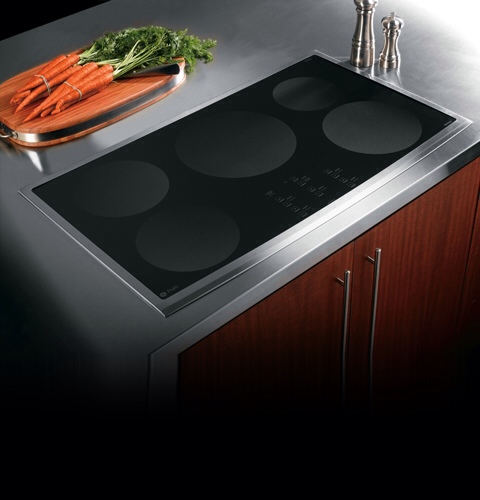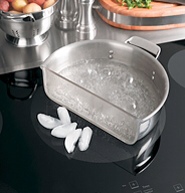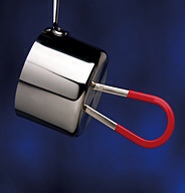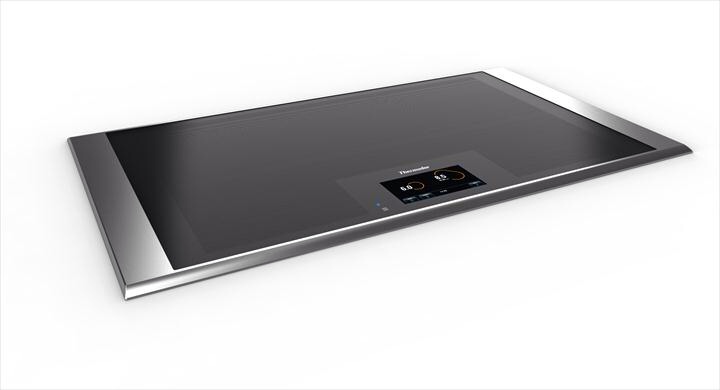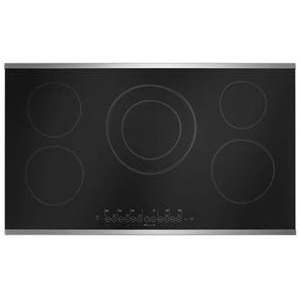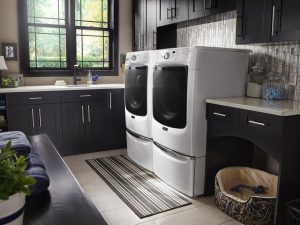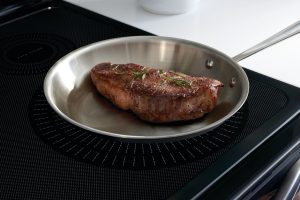Induction Cooking - An Idea whose time has come
Many people think Induction is a new cooking technology. However, the earliest patent for induction cooking goes back to 1906. Westinghouse showed induction cooking at a Home Exhibition in the 1950's, and Induction cooktops have been around off and on by various appliance manufacturers for over forty years. For a variety of reasons induction never caught on. Today, all the major brands have induction cooktops and most have also launched induction ranges.
There are many reasons why most people in the industry feel that induction has now reached a takeoff point. The technology and the reliability is vastly improved, and some induction cooktops and ranges are available at mainstream price points. Moreover, when a technology has such wide support among all manufacturers there is so much marketing force behind it that the likelihood of success goes way up.
Induction should correctly be referred to as magnetic induction. Electric coils transfer energy from the cooktop to the pan. The electromagnetic energy is converted into heat by the iron in the pan. It is a highly efficient method of creating heat from an energy source. Since the heat exists solely in the pan, benefits include high heat generated very quickly, and little heat transfer to adjacent non-ferrous areas. Clean-up is a snap because spills do not bake on.
Induction offers all the advantages of gas without the worries of an open flame, and all of the benefits of a smooth glass cooktop without the disadvantages of time to heat up and retained heat. Chefs who cook with induction often rave about the responsiveness of the technology.
There are few disadvantages to induction. Perhaps the biggest obstacle is that users must have pots and pans that can conduct electro-magnetic energy. That is, the pans must have a ferrous metal core. The easy way to check cookware is to see if a magnet will stick to the bottom of the pan. Naturally, chefs accustomed to cooking with gas or radiant electricity will have to adapt their techniques. For example, suppose a chef is used to holding a pan a few inches over a flame to keep it warm while he stirs or tosses the contents of the pan. When she takes the pan off the induction cooktop the induction heat will shut down. The only heat will be the warmth from the pan which will dissipate quickly.
Digital controls combined with induction technology make a vast array of features available. Here are a few of them. Many induction cooktops have a Power Boost feature that concentrates the induction energy in one element or area of the cooktop. Using this feature elements can reach power levels of up to 5,000 watts (depending on brand). Some cooktops have multiple transformers so that power is not shared from one element to another. Another interesting feature is an auto-sensor that prevents pots from boiling over. Recently, one manufacturer introduced a cooktop that “sizes” itself to the pan being used. This unique feature allows the entire cooktop to act as a single surface so that cooking occurs wherever the user places the pot or pan.
Induction is an exciting new technology – for many it's a dream come true. Explore induction for yourself by calling or visiting the experts at Universal Appliance and Kitchen Center.
Universal Appliance and Kitchen Center
12025 Ventura Blvd. Ste B-105
Studio City, CA 91604
PH 877 696-2987
facebook twitter
Ask about the special closeout pricing on this Jenn-Air 36″ Cooktop JEI0536ADS
- The Ultimate Outdoor Grill Guide for 2025: Built-In vs. Freestanding
- Smart Bathroom Faucets & Fixtures in 2025: Blending Technology with Luxury Design
- Built-In Coffee Machines: Are They Worth It for Your Kitchen in 2025?
- How to Choose the Right Dishwasher for Your Home: Noise, Capacity, and Features Explained
- Top 5 Kitchen Appliance Colors and Finishes for 2025 (And How to Match Your Style)
- Why a Countertop Ice Maker is a Must-Have for Summer Kitchen Upgrades in Southern California
- How to Remove Scratches from Stainless Steel Luxury Appliances
- When Is the Best Time to Buy Appliances? Your 2025 Buying Guide
- The Ultimate Guide to Outdoor Beer Dispensers: Elevate Your Backyard Entertaining in 2025
- Choosing the Perfect Bathtub: Freestanding vs. Built-In Styles for a Luxury Bathroom


